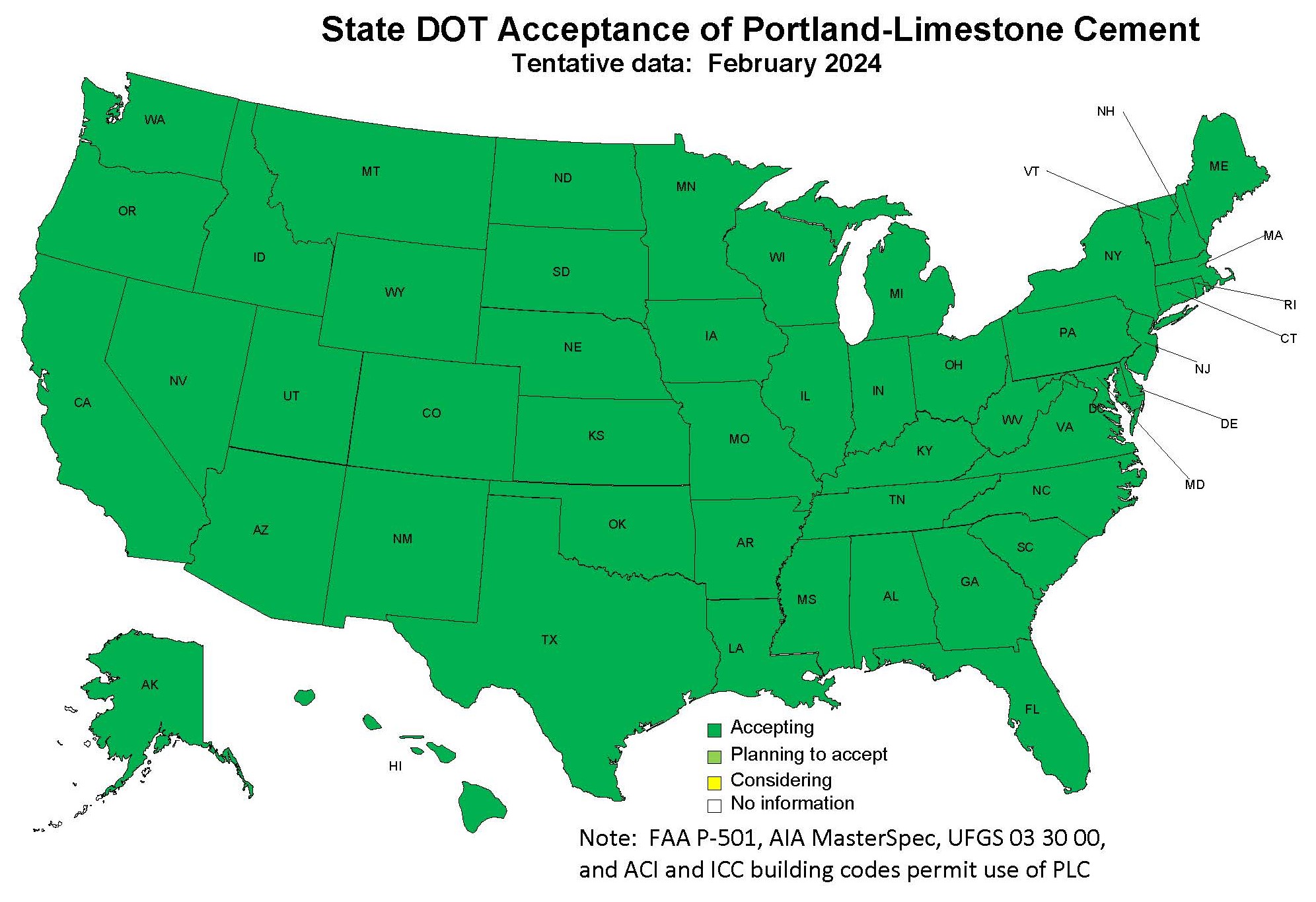Cement & Concrete Basics FAQs

What is portland-limestone cement?
Portland-limestone cement (PLC) is a type of blended cement specified under ASTM C595 (or AASHTO M 240). In the US and Canada, PLCs are made with portland cement and between 5% and 15% fine limestone. Through particle packing and chemical effects, this type of cement has performance comparable to Type I portland cement with about 10% lower greenhouse gas emissions.
PLCs with special properties like moderate heat of hydration or sulfate resistance are also available.
This type of cement has been common internationally for decades but is relatively new to North America. Many state DOTs have adopted provisions to use PLC and they are accepted by ACI codes and specifications like ACI 301 and ACI 318, building codes of the International Codes Council (ICC) (which many local building codes are based on) as well as specifications of the Federal Aviation Administration (FAA), and the American Institute of Architects’ (AIA) MasterSpec.

Status of acceptance of portland-limestone cement in state DOT specifications.
Click here to download this map.
See SN3148 for more information